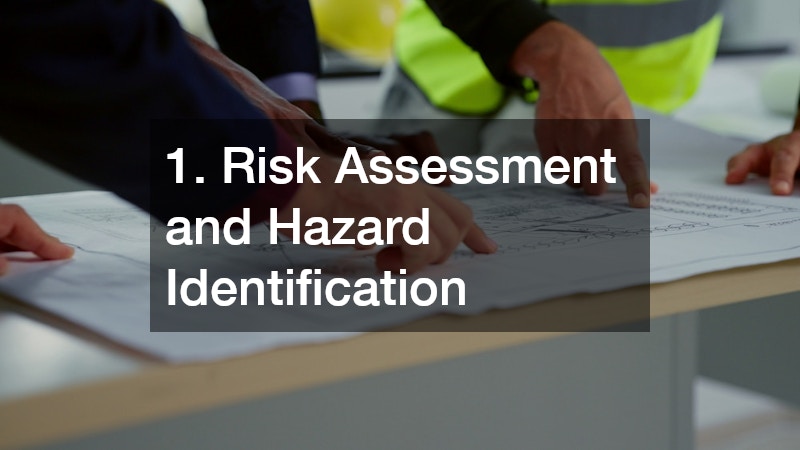The Essential Components of an Effective Workplace Safety Plan
Every employer knows that maintaining a safe work environment is crucial to the health and well-being of employees. But how do you ensure safety in the workplace while meeting legal requirements and improving productivity? The answer lies in developing an effective workplace safety plan.
A well-crafted safety plan serves as a proactive strategy to protect employees, minimize risks, and ensure compliance with workplace safety laws. Not only does it prevent accidents and injuries, but it also enhances morale, productivity, and organizational efficiency.
This article will walk employers through the essential components of an effective workplace safety plan and why it’s vital for long-term success.
What Should a Workplace Safety Plan Include?
When creating a safety plan, employers must include several key components that cover all areas of potential risk. Here’s a breakdown of the essential elements to incorporate into your safety strategy:
1. Risk Assessment and Hazard Identification
The foundation of any effective workplace safety plan is understanding the potential hazards. These can vary depending on the industry, but common risks include physical injuries, chemical exposures, ergonomic issues, and fire hazards.
Steps to follow:
- Conduct regular safety inspections.
- Identify risks based on workplace activities and environments.
- Engage employees in hazard identification to ensure no risks are overlooked.
2. Safety Procedures and Protocols
Once hazards are identified, employers need to establish clear safety procedures and protocols to address each risk. These procedures should be easy to understand and implement, ensuring that all employees know how to act in various situations.
Examples of safety procedures:
- Emergency evacuation protocols.
- Safe operation of equipment and machinery.
- Personal protective equipment (PPE) guidelines.
3. Training and Education Programs
A workplace safety plan is only as effective as the knowledge employees have about it. Regular training sessions should be conducted to educate staff about safety protocols, emergency response, and equipment handling.
Training essentials:
- Initial onboarding safety training for new hires.
- Ongoing refresher courses.
- Specific training for high-risk areas (e.g., handling hazardous materials).
4. Emergency Response Plans
What happens in an emergency can determine the outcome of a crisis. Employers must outline procedures for handling various emergencies, such as fires, medical emergencies, or natural disasters.
Key elements:
- Evacuation routes and assembly points.
- First aid kits and designated medical responders.
- Clear communication channels for emergencies.
5. Reporting and Documentation Systems
A well-documented workplace safety plan is essential for tracking incidents, identifying patterns, and improving safety measures over time. Regular reporting allows employers to monitor safety performance and make necessary adjustments.
Important documentation to keep:
- Accident reports.
- Safety audits and inspections.
- Records of safety training sessions.
6. Health and Wellness Programs
In addition to physical safety, a comprehensive workplace safety plan should focus on employee health and wellness. Offering programs that address mental health, stress management, and overall well-being can reduce absenteeism and improve workplace productivity.
Examples of wellness programs:
- Employee counseling services.
- Stress management workshops.
- Access to fitness facilities or wellness incentives.
7. Regular Safety Audits and Updates
Safety plans should be dynamic and adaptable. Conducting regular audits and reviews ensures that the plan stays up-to-date with new risks, regulations, and best practices. This will help employers ensure that their safety plan remains effective as their business evolves.
Audit considerations:
- Compliance with local, state, and federal regulations.
- Incorporating new technologies or equipment.
- Feedback from employees about safety concerns.
Creating a Safety Culture: Engaging Employees in the Process
One of the most important aspects of a workplace safety plan is creating a culture where safety is everyone’s responsibility. Engaging employees in safety efforts not only empowers them to take ownership of their well-being but also fosters an environment where safety becomes second nature.
How to build a safety culture:
- Encourage open communication: Make it easy for employees to report hazards, near-misses, or safety concerns without fear of reprisal.
- Involve employees in safety meetings: Include team members in discussions about safety improvements, and ask for their feedback on existing protocols.
- Recognize and reward safe behavior: Regularly acknowledge employees who contribute to a safe workplace, whether through adherence to safety protocols or proactive safety suggestions.
- Lead by example: Leadership should model safe behaviors, demonstrating that safety is a priority from the top down.
By involving employees in the development and maintenance of a workplace safety plan, you create a more committed and proactive workforce, leading to a safer, more cohesive workplace environment.
How Employers Benefit from Workplace Safety Laws
How might employers benefit from workplace safety laws? Employers who prioritize a comprehensive safety plan and adhere to workplace safety laws can experience numerous benefits. These include reduced workplace accidents, lower insurance premiums, fewer workers’ compensation claims, and higher employee satisfaction.
Following safety laws not only ensures legal compliance but also strengthens a company’s reputation. Safe workplaces attract better talent, reduce turnover, and foster a culture of trust. Moreover, when employers demonstrate commitment to employee well-being, they boost morale and performance.
Conclusion: Why Your Workplace Safety Plan Is Vital
An effective workplace safety plan is essential for every employer looking to protect their employees and business. By focusing on hazard identification, safety procedures, training, and continuous improvement, you can create a safer and more productive work environment. Moreover, adherence to workplace safety laws provides additional benefits, ensuring compliance and fostering a positive company culture.
Now is the time to implement these key components to keep your workforce safe and your operations running smoothly. Start developing your workplace safety plan today, and your business will be on the path to long-term success.







